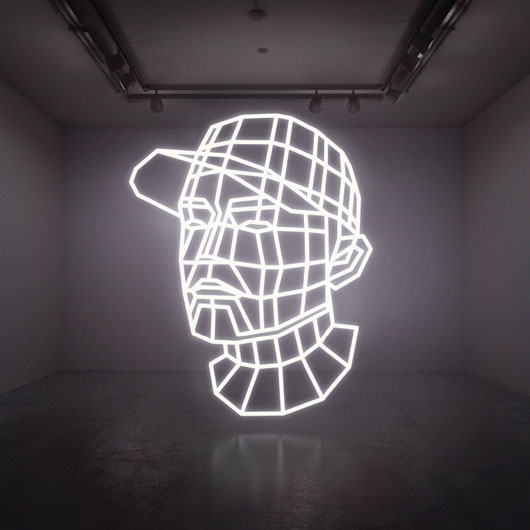Rewind: DJ Shadow
There are endless treasures in DJ Shadow‘s deep discography. Although his career stretches back much […]
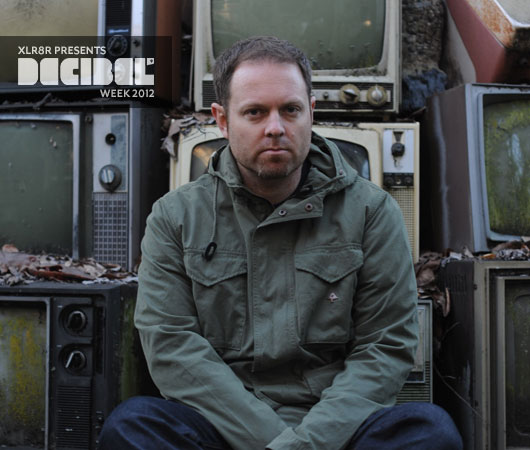
Rewind: DJ Shadow
There are endless treasures in DJ Shadow‘s deep discography. Although his career stretches back much […]

There are endless treasures in DJ Shadow‘s deep discography. Although his career stretches back much further, the legendary turntablist first struck gold with his 1996 full-length debut, Endtroducing….., an all-sample album that continues to inspire nearly two decades after its release. Since then, Shadow (a.k.a. Josh Davis) has released several more acclaimed records, as well as a couple of collections of lost gems, and has worked with everyone from Cut Chemist to Little Dragon to Talib Kweli. Ahead of his headlining performance this Saturday at Decibel and the release of his new best-of collection, Reconstructed: The Definitive DJ Shadow, he took us on a trip through his lengthy, wide-ranging back catalog, starting with his early singles for London-based label Mo’ Wax, all the way through his recent archival projects.
“The thing is, I just don’t want to repeat myself,” he explained. “I don’t want to settle into an easy chair and just go, ‘Okaaaay, I’ll just give the people what they want.’ Because I do feel as though there are a lot of fans that depend on me to continue to seek my own joy in music and continue to force myself to keep my ears open and try different things. So I continue to try to do that, for better or for worse.”
“What Does Your Soul Look Like” EP (1995, Mo’ Wax)
I consider the What Does Your Soul Look Like EP my first major release. It was the beginnings of an album—it’s a 35-minute single—and that’s because I was halfway through my debut album and Mo’ Wax decided they thought it would be a good idea if I put out one more single to calibrate people before I dropped a full-length. I remember being kind of dismayed by that decision, because it had taken me a good four months to get that music together and I knew it meant that I would have to start from scratch. So even though Endtroducing….. is my first full-length album, I had [already] released over an hour’s worth of music—maybe more, but I’ve never done the math—and then, of course, concurrent to all that was all the production stuff I was doing for Soulsides and Blackalicious and all my friends.
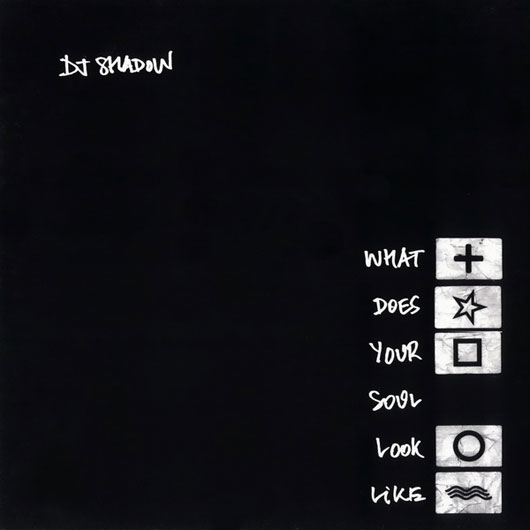
Endtroducing….. (1996, Mo’ Wax)
I felt like I was on to something when I was doing “Influx,” my first single for Mo’ Wax, “Lost in Sound,” my second single, and the What Does Your Soul Look Like EP. All of that preceded Endtroducing….., and the reason why it’s spelled with an “E-N-D” is because it signified the fourth and final chapter in a series of pieces that I was doing for Mo’ Wax with a certain sound, a certain tone, a certain atmosphere. And I feel like my work really changed after that. It was the summary of this sound, and [the album] wrapped up the series. I had this vision at the time that every album I did after that would be completely different, and that’s something I’ve been trying to be adamant about—maintaining that autonomy from record to record.
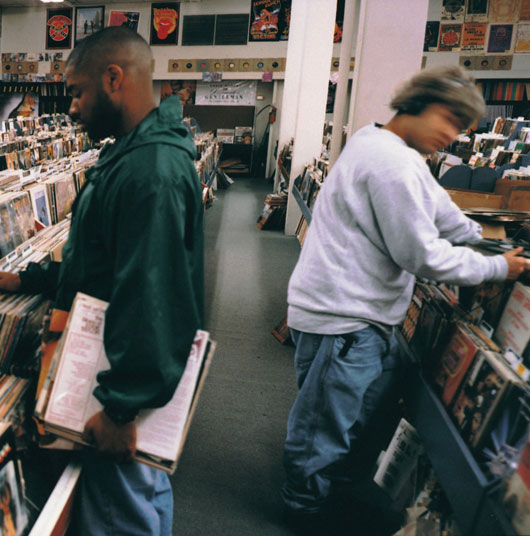
Preemptive Strike (1998, Mo’ Wax)
Preemptive Strike came out very shortly after Endtroducing….. came out in the US, and it was intended only to be released in the US, to bring everyone [here] up to speed with what was happening in the UK—all the singles that they were already privy to. I remember there being talk about some kind of reissue project with London—the US-based imprint that was dealing with Mo’ Wax at the time—but I don’t think they had that much emotional attachment to what I was doing, so that’s why this album is called Preemptive Strike. I felt that if anybody was gonna go strolling through my back catalog, that I was going to be the one to do it. [I wanted] to put things in the right order and have it be a product that I could live with, as opposed to something that was slap-dashed that didn’t have my approval. It was intended to be a limited-edition, US-only release, but somehow, none of that ended up happening. It came out as Endtroducing….. was gaining cult status in the US and it became something else that [people] could go out and explore at the same time.
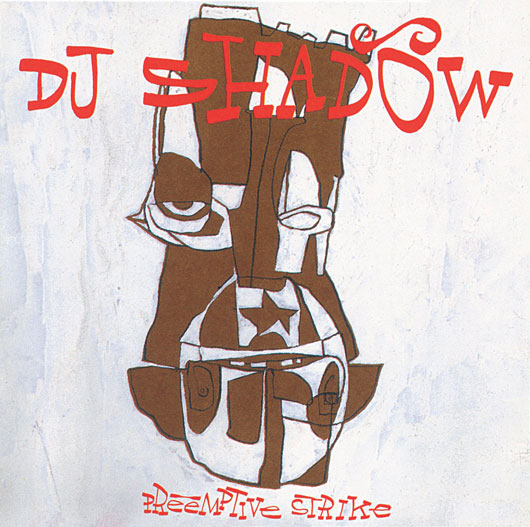
UNKLE, Psyence Fiction (1998, Mo’ Wax)
This is an album I produced in its entirety, and I’ve always considered it my second real album. Psyence Fiction was something that I started working on before Endtroducing….. was even released, and in the span of time between when I finished Endtroducing….. and started working on the UNKLE record, I felt like if you do the work and it’s appreciated by people, you feel as though people are giving you carte blanche to do whatever you want creatively, which really is a great motivator for any artist. I really felt like I took all the goodwill behind Endtroducing….. and channeled it into Psyence Fiction. I felt like I grew exponentially during that time as an artist. When I listen back to my favorite tracks off that record, like “Lonely Soul” or “Rabbit In Your Headlights,” what I like about them is that they seem really audacious—there were no rules or restrictions. We weren’t trying to make pop music. We combined elements of the rock world and the electronic/hip-hop world, and that really wasn’t done at that time. Since then, of course, it’s become almost a cliché, but back then, they were completely different universes. James and I thought it was fun and groundbreaking at the time, to mix up those waters. I’m really fond the project. It took me to a lot of places and it helped me shape my vision as a producer.
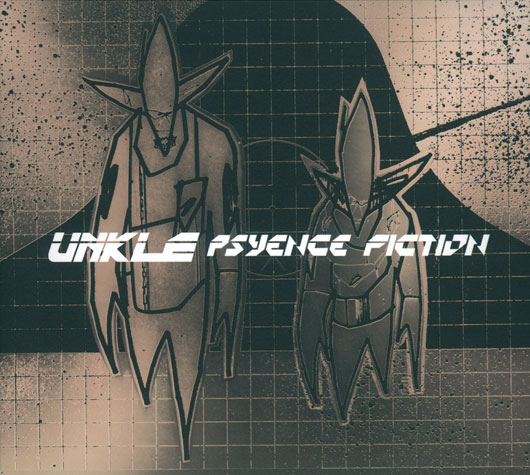
DJ Shadow & Cut Chemist, Brainfreeze (1999, Sixty7)
Both being producers in California, everyone was always telling me I had to meet Cut Chemist, all the way back in ’93 or ’94. They said we’re like twins, like brothers. “Same shit. Same values. You’re both completely hip-hop nerds and you focus on the same details. You guys gotta meet each other.” And eventually we did, at a record show in Oakland. But what drew us closer is that my first record was called “Lesson 4.” And his first record was called “Lesson 4.” He had no idea that I did that record, so right there, we were both playing homage to the same Double Dee & Steinski Lessons 1-4, which had come out eight years prior and was forgotten by pretty much everybody except hardcore hip-hop nerds like him and me. So from the very beginning, we were totally linked.
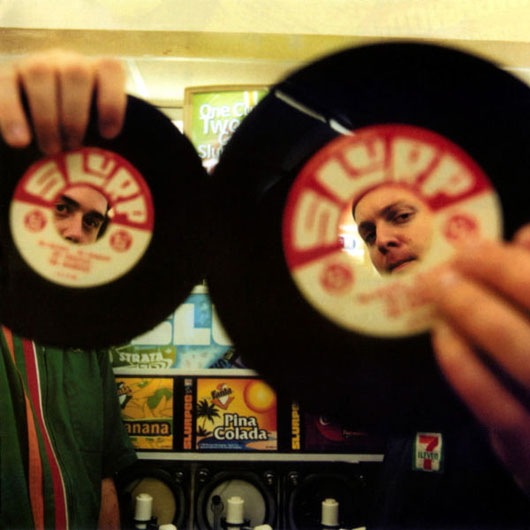
By the late ’90s, people were telling us we had to do something together. A promoter here in the Bay Area asked us to DJ together, which we hadn’t done yet at the time. It was Cut’s idea to make it all 45s because he had heard about my collection and wanted to do something with it, and we wanted to make a statement. Brainfreeze ended up being a phenomenon and we’ve gotten together a few times since then to do completely new sets. There’s always been a big mutual respect between the two of us. We’ve carved our own paths now, but when we get together, we end up talking about the same stuff—just deeper.
Dark Days (2000, MCA)
Back in ’98, the UNKLE album had just come out, and I had just got back from a pretty exhausting US tour with the Soulsides/Quannum guys. I was really beat down after that tour, and I remember somebody from London had mentioned that someone was trying to get a hold of me through them for months. I eventually ended up meeting the director of Dark Days, and I remember thinking that I really didn’t have time, but I wanted to at least honor the guy’s effort that he put into the project and tracking me down. But then the lights went up at the end of it and I remember thinking, “Fuck, now I have to do this,” because it was so good. In the end, it’s sort of a misnomer that I did the score, because a lot of it is my music that had already been out, but I did some new cues and I did the main theme. I love that track, and it’s on the best-of album. It sums up a lot of what I like about my music, and what I think other people like about my music.
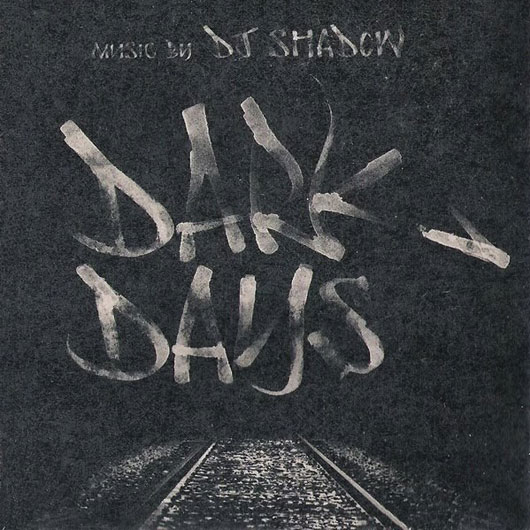
It was a difficult time—the Mo’ Wax era was coming to a close. James had lost all his artists. There was a shakeup at Universal in the UK. Everything was changing, and I remember feeling that at the time. I wasn’t yet settling into The Private Press, and Dark Days gave me something to do, something to occupy my mind when everything else was taking shape and settling down.
The Private Press (2002, Island Records/MCA)
I knew I wasn’t going to rush into my next solo album. I did rush into the UNKLE album—not in an uncomfortable way, but because of circumstances, and that album did take a lot out of me. I felt like I needed some time away from the studio. Also, after the UNKLE record, I decided I had had my fill of collaborations for a while. The Private Press was all about me getting back to a really personal place and making music that was very much from the heart.
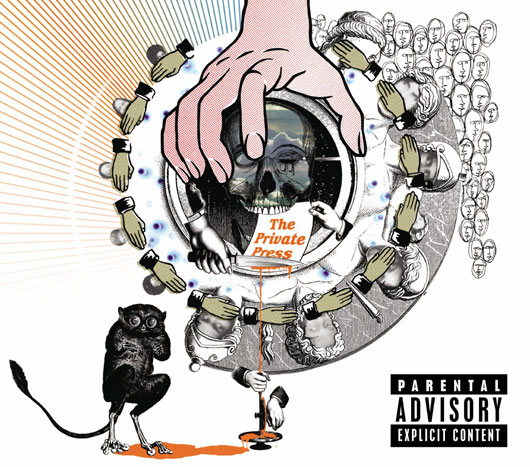
By the time I started working on The Private Press, there was a sense that Endtroducing….. was a much-loved record by some people. I never really felt pressure—I was constantly asked about that—but I really didn’t. I just wanted to top the UNKLE record, which I felt was leaps and bounds more sophisticated than Endtroducing….. My overall assessment of The Private Press is that, song for song, it’s far superior to Endtroducing…... However, I will concede that it is not as cohesive. Nor was it ever intended to be, in a weird kind of way. In the early part of my career, I found it interesting to do these long sketches, and by the time The Private Press came around, I found it to be a challenge. I felt like for me to try to rein it back a little bit, to pull everything back into a good six-, five-, four-, or even a three-minute track, was no less valid. I wanted my pieces to be really succinct and to the point. I felt like The Private Press was a real personal victory, and I’m very proud of it.
The Outsider (2006, Universal)
There’s not much I can say about this album that hasn’t already been said. It was definitely intended to be a provocative record, a record unlike anything I had ever done before, and that in itself seems to have been real controversial. There was a real battle of wills going on between myself and the people who loved my early work and wanted to keep me in that place. [The album] was a statement of intent—basically me saying that I’m very impressionable, there’s a lot of music out there to be discovered, and I don’t want to stay in one place. I love music too much and I’m too open minded to just limit myself to like, “Oh, it’s ’96, and I don’t want to ever listen to any new music ever again and I’ll just keep repeating myself over and over and over again.” To me, that’s creative bankruptcy. So The Outsider was sort of a rallying cry, a statement of independence. I knew—or I hoped, I should say—that it would be better understood as time went on, and I do feel like that has happened.
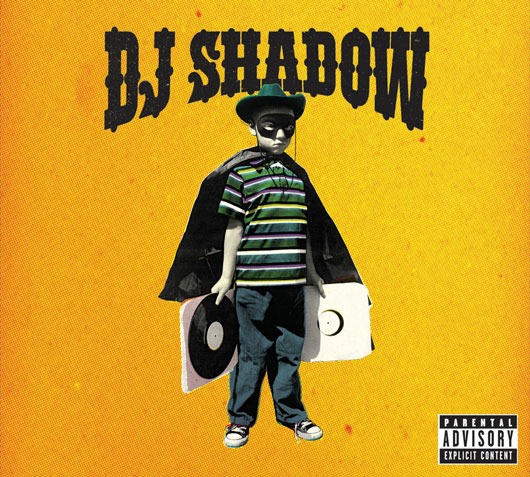
The Less You Know, The Better (2011, Verve)
The Less You Know, The Better represents the closing of a loop and coming full circle in terms of this journey of putting out records and having them dissected with people telling me what they like and don’t like about my music. I could’ve made a self-consciously contemporary record, but I really just wanted to find new ways of saying things in my traditional method of working. I didn’t want it to be a big statement or push in the way The Outsider was. I just wanted it to be an album of good music that will hold up 10, 20, 30 years from now. I like music that doesn’t really have a time or place—that doesn’t ride the trends or depend on the latest plugin. And I suppose when I say it was a “return to form,” I think I mean that I wanted to get back to the spirit of The Private Press, which was a very personal record with just me in the studio. I worked really hard in almost total isolation on this record and got back to a place, creatively, that I feel like I hadn’t reached since The Private Press—the kind of place you can only get in total isolation, in solitude, and that’s what I wanted.
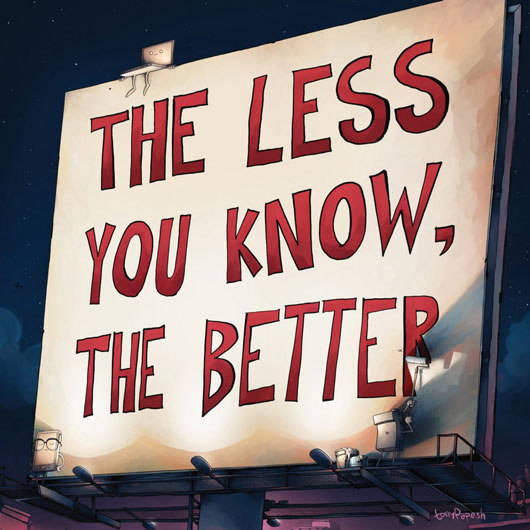
I did have Little Dragon, Talib Kweli, Tom Vek, and Posdnuous from De La Soul contribute to the record, and having those collaborations on there was great. All of them came to me towards the very end of working on the project. I wanted to get an arsenal of tracks together that I made in isolation, without any give and take, and then present them to people and wrap the song around what they did with it. I did it that way because I wanted my artistic vision to remain pure throughout the process.
Total Breakdown: Hidden Transmissions From MPC Era 1992-1996 (2012, self-released)
After The Outsider, I did a series for my website called The 4-Track Era, and that was the template for the MPC Era. The 4-Track Era was an exhaustive, and quite difficult, scouring of all my four-track cassette work that I’d done between ’89 and ’92 or so, when I got my MPC. All these archival things—I take them for what they are. They aren’t made to set the world on fire; they’re just meant to offer a unique window into the work I’ve done at various times for the people who are big enough fans who want to get a little deeper. Not everyone does. So this stuff is limited and meant for hardcore fans, and that’s how I approach it. [Doing archival projects like] Total Breakdown allows me to calibrate myself and go back and break bread with what I was doing at a completely different time in my life that’s sometimes hard to identify with. The things I think about now, my concerns, my hopes and my dreams, have nothing to do with what I was concerned about 20 years ago, or even six years ago. So I think sometimes it’s a good and fun to pop in an old tape and go, “Wow, fuck. I totally forgot about this song, but it meant so much to me back then. How could I have forgotten about it?” It’s funny how often that can happen.
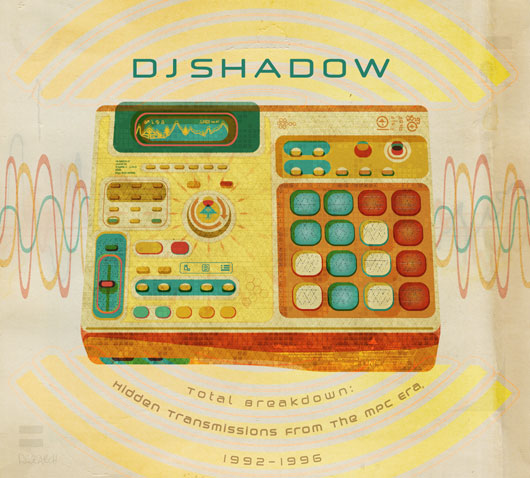
Reconstructed: The Definitive DJ Shadow (2012, Island)
The whole best-of concept has come up quite a few times over the last six or seven years, and it was always something I resisted because it’s this weird thing. For one, I didn’t think I had enough material to choose from. But then The Less You Know, The Better came out, the subject came up again, and for the first time, I was like, “Yep, I can see that. I guess I can do that now.” Because there was enough new music in the pipeline so it wouldn’t be like, “Here’s Endtroducing….. and half a dozen bonus cuts.” I looked at my five major albums and picked my favorite two tracks [from each one]—that’s 10 right there—and then I added two new tracks, included the Dark Days track, and before I knew it, it was done. In some cases, I had to defend to the label why certain tracks weren’t included on the single-disc version, but ultimately, there are so many different formats and versions, I was able to get all the tracks I think my fanbase loves, and the ones I love.
